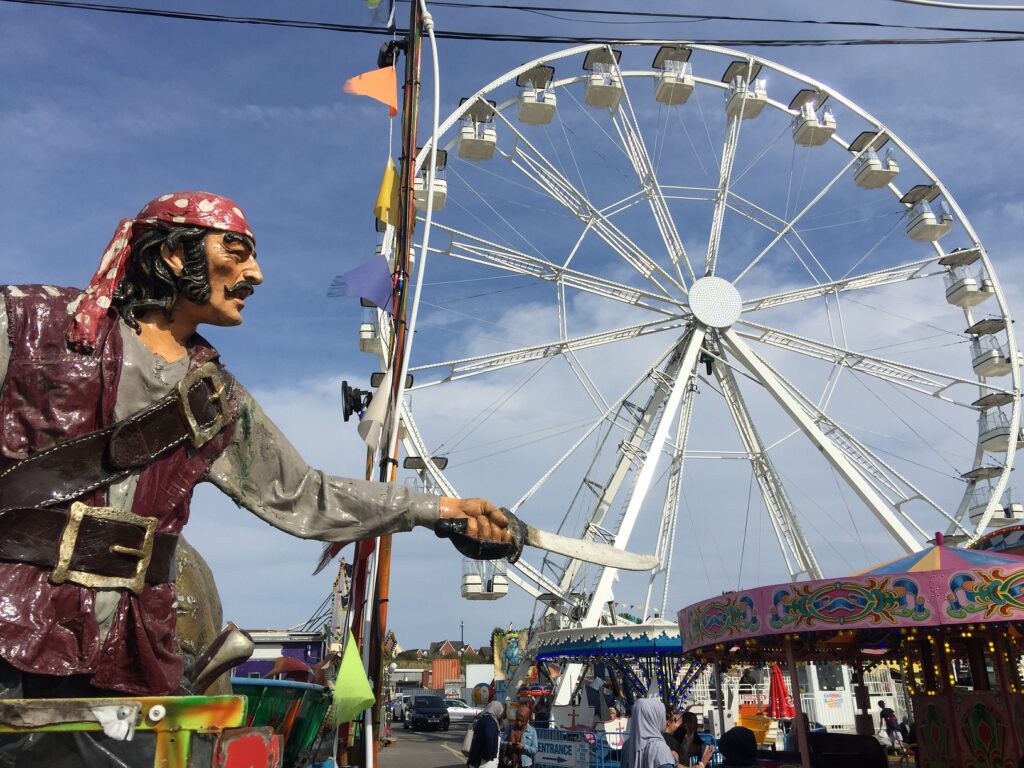
Barry
BARRY is a coastal town in the Vale of Glamorgan, south Wales, situated about nine miles south-west of Cardiff. Historically a small village, Barry grew rapidly during the 19th and early 20th centuries due to the development of Barry Docks, which at one point became the world’s largest coal-exporting port. The town’s maritime legacy remains an important part of its identity.
Today, Barry is a vibrant community, blending seaside charm with urban amenities. One of its most popular attractions is Barry Island, famous for its sandy beach, family-friendly promenade, amusement park, and as the filming location for the hit BBC comedy Gavin & Stacey. The area draws thousands of visitors each year, especially during summer.
The town offers a mix of traditional and modern living, with shopping districts, parks, schools, and good transport links, including regular rail service to Cardiff. Barry is also undergoing regeneration, with developments around the Waterfront and former docklands aimed at revitalizing the local economy and housing.
Barry has a strong sense of local identity, supported by community events, local markets, and historical attractions such as the Barry War Museum and the Knap Gardens. The town is surrounded by picturesque countryside and coastal paths, making it a gateway for outdoor exploration.
Barry’s history stretches back to ancient times, with evidence of Roman and early Christian settlements in the area. The town takes its name from St Baruc, a 6th-Century Christian monk who was buried on Barry Island, then a tidal island.
In the medieval era, Barry was a small agricultural village centered around Barry Castle, a Norman fortification built in the 12th Century. For hundreds of years, the area remained rural and sparsely populated, consisting of several small hamlets.
Barry’s transformation began in the late 19th Century with the industrial boom. The growing demand for coal exports from the south Wales valleys led to the construction of Barry Docks (opened in 1889). Engineered by Sir John Wolfe Barry, the docks quickly surpassed Cardiff and became the largest coal-exporting port in the world by 1913.
This industrial growth sparked a population explosion, turning Barry into a bustling town. New housing, railways, schools, and churches were rapidly built to accommodate workers and their families.
Barry thrived through the early 20th Century, but the decline of coal in the mid-century caused economic challenges. Despite this, Barry Island developed as a major holiday destination with a Butlin’s camp (1947-1986), fairground, and beach promenade attracting visitors from across the UK.
In recent decades, Barry has focused on regeneration, particularly around the former docklands and waterfront. The town has diversified beyond its industrial roots, with a growing residential population and a thriving tourism sector – helped in part by the popularity of the Gavin & Stacey TV series, filmed largely in Barry.
Today, Barry blends its maritime and industrial heritage with a modern, community-focused outlook.

Barry Island Pleasure Park has been a beloved destination for over a century. Established in 1897, the park gained popularity with the arrival of the railway in 1896, which made the island more accessible and led to a surge in visitors. By 1923, the park was relocated inland from the beach to its current permanent site, coinciding with the construction of a new promenade.
Throughout its history, the park has seen various ownerships and transformations. In the mid-20th Century, it was home to the iconic Scenic Railway, a wooden rollercoaster that operated from 1940 until its demolition in 1973 due to storm damage. The park’s fortunes fluctuated over the years, with periods of decline and revival.
In 2015, showman Henry Danter acquired the park and initiated a significant revitalization effort. Investments included the introduction of new rides such as the £1.2million Pirate River log flume, the Barry Eye Ferris Wheel, and the Aerospace, the UK’s largest thrill ride. Danter also announced plans to develop a nearby holiday camp to complement the park’s offerings.
Today, Barry Island Pleasure Park features over 20 attractions catering to all ages. Thrill-seekers can enjoy rides like the Cyclone rollercoaster, High Altitude and Hellraiser, while families and children have options such as the Dragon Coaster, Samba Balloons and traditional Gallopers. The park operates seasonally, opening on weekends from Easter and daily during school summer holidays until early September.
Situated opposite the sandy beachfront of Whitmore Bay, the park is part of a vibrant area filled with shops, cafes, and arcades, making it a central attraction in Barry’s seaside experience.
A former major attraction to the seafront was Butlin’s Barry Island, a popular holiday camp which opened in 1966 as part of Sir Billy Butlin’s famous chain of British seaside resorts. Built on the site of a former naval base, the camp featured the signature Butlin’s experience: affordable, family-friendly holidays packed with entertainment, funfairs, and all-inclusive amenities.
The resort offered chalet accommodation, indoor and outdoor activities, live shows, and a Redcoats team that organized games and performances. It became a cherished holiday destination, especially for families from Wales and the Midlands.
However, changing holiday habits and competition from overseas travel led to its decline. Butlin’s Barry Island closed in 1986, and the site was later redeveloped into housing and leisure facilities.
Though no longer standing, the camp holds nostalgic value for many and remains a memorable chapter in Barry Island’s rich seaside history.
